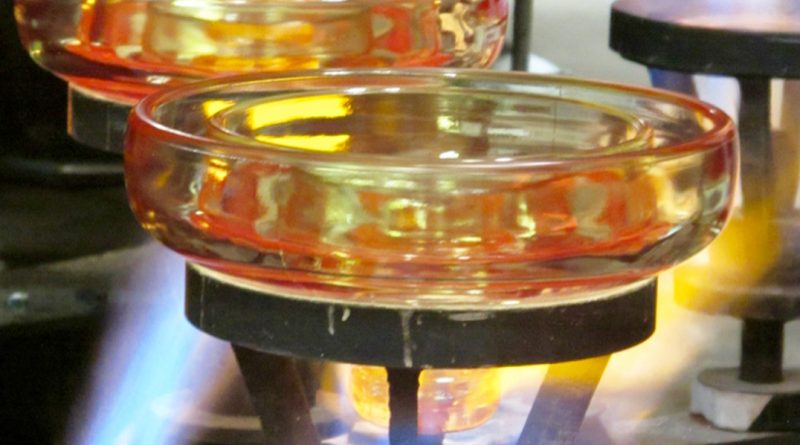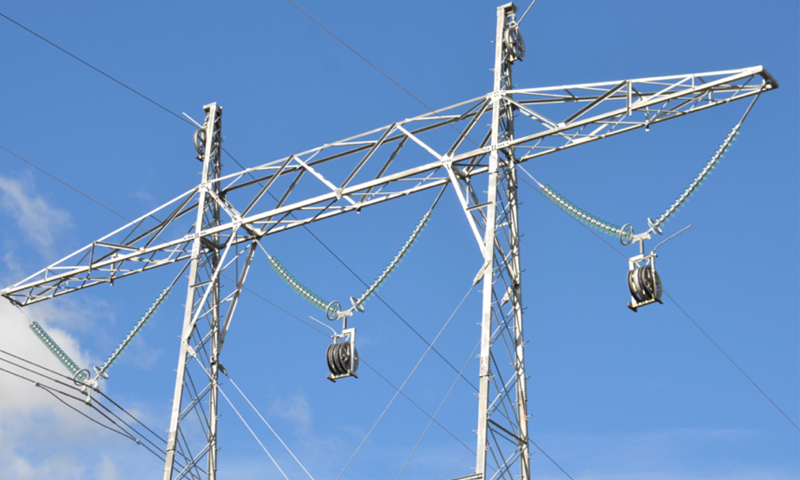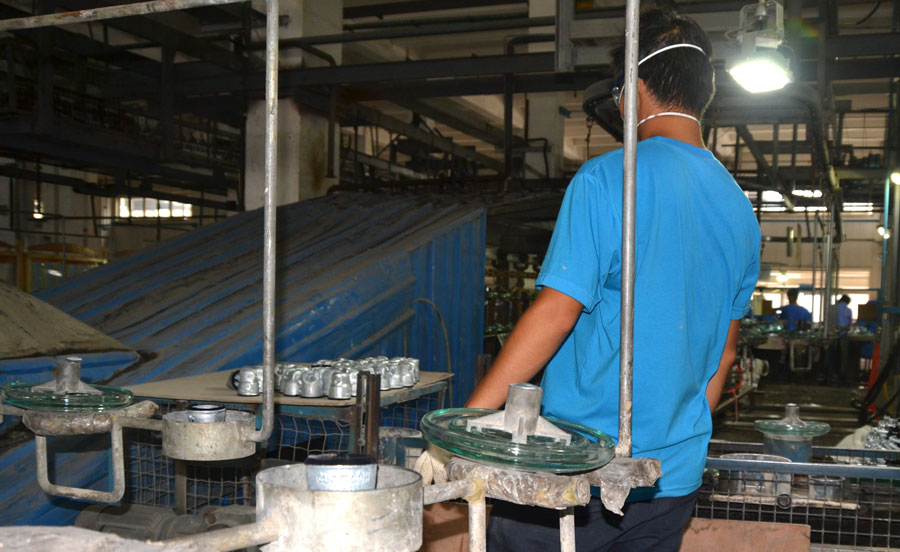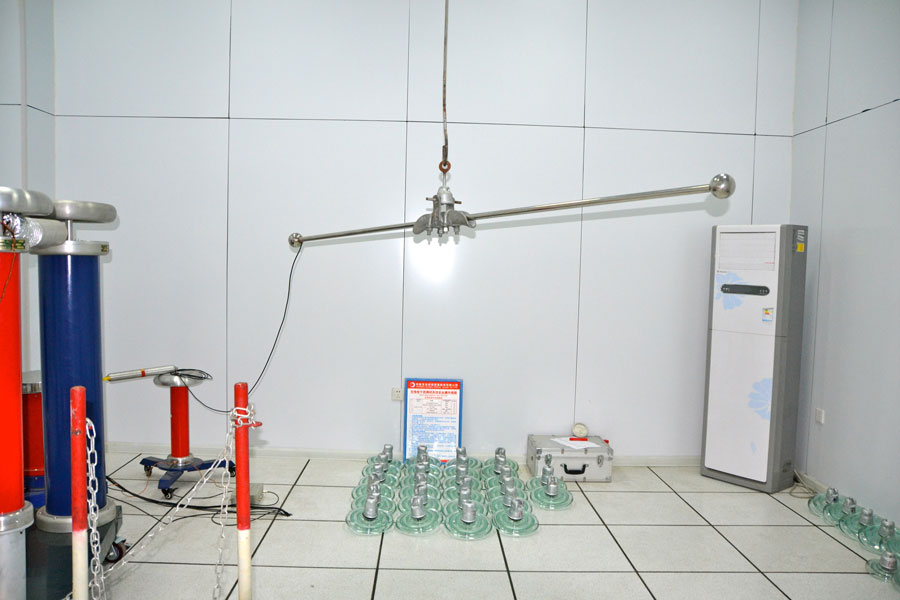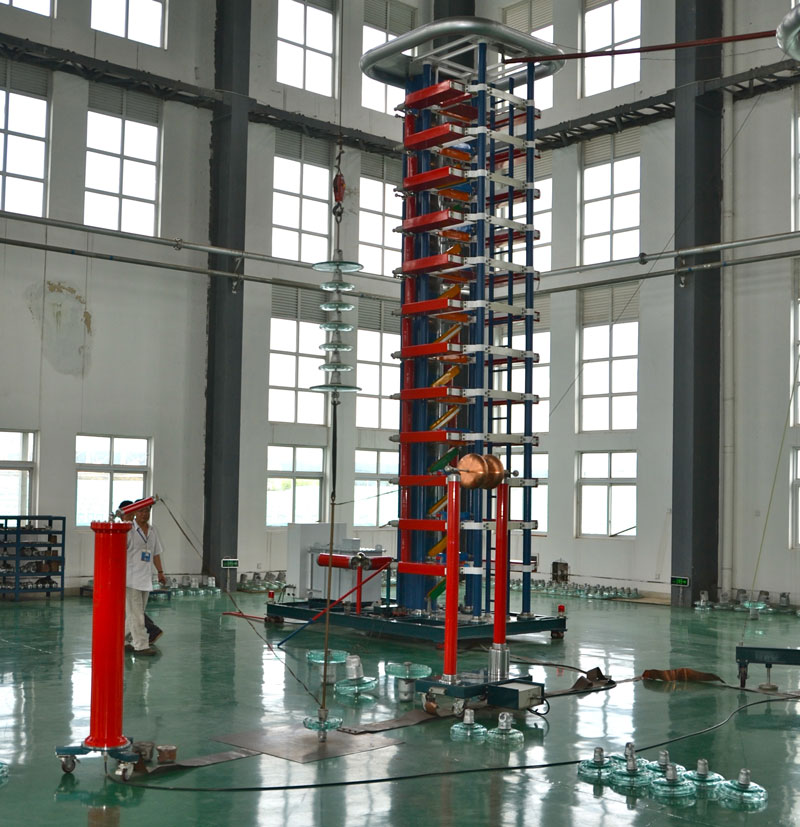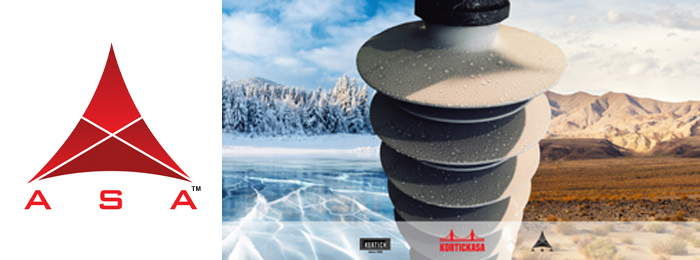To some users, toughened glass insulators might appear a commodity whose performance level is assured by applicable international standards. However, recent service experience and laboratory research have revealed that, despite the standards, quality of glass insulators can vary significantly among suppliers, depending on factors such as raw materials as well as process know-how and control.
This INMR article, based on contributions by utilities in Norway and Sweden as well as on visits to glass insulator manufacturing facilities worldwide, describes the key elements in production of these insulators intended to assure consistent quality and performance
Service Experience with Different Quality Glass Insulators
Norwegian transmission system operator, Statnett, closely monitors quality of all glass insulators purchased. For example, representatives attend sample testing for major deliveries and have also evaluated test results spanning many years. In spite of these precautions, operating data on annual shatter rate per 100,000 glass insulators have shown that this parameter can vary significantly among different suppliers and sometimes even for different batches from the same supplier.
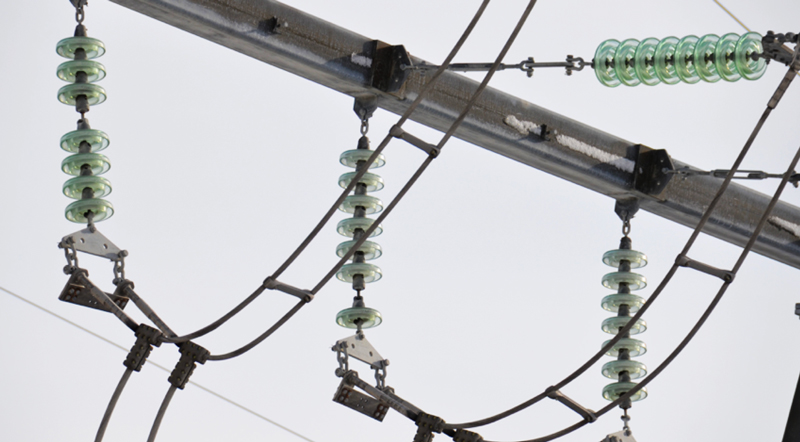
Similarly, glass cap & pin insulators were specified during recent refurbishment of a 220 kV line by Swedish TSO, Svenska Kraftnät. The insulators were supplied based on usual tendering practices, including compliance with all IEC requirements, and installed in a clean but humid area typical of the region. After only a brief time in service, abnormal discharge activity and audible noise were reported on these insulators, usually when humidity was high. Field inspection confirmed the activity and suggested that insulators could be suffering from defects in cement, which could adversely impact long-term performance.
>Detailed follow-up investigation, including voltage tests at operating voltage, revealed discharge activity on the glass surface around the pin, just outside the cement. This was especially evident if the electric field distribution in this part of the insulator was exposed to sprayed water to simulate humid service conditions. Resistance measurements using a hand-probe showed that this weakness was due to unusually high conductivity as well as unfavourable geometry of the cement. RIV levels, for example, had wide spread among insulators from different manufacturers and this was interpreted as an indicator of poor quality control. Given this, it was proposed to expand test requirements for future tenders to include RIV measurements at 20 kV and 24 kV to reduce risk of future similar problems. It was felt that such a requirement would be easy to implement and help ensure that all insulators purchased are more robust with respect to discharge activity under humid conditions.


Production Process & Quality Control
Production of toughened glass insulator discs begins with a highly automated process aimed at ensuring a consistent, perfectly homogenous chemical composition. Raw materials, including quartz, sand, soda ash, calcitite, feldspar and dolomite, among others, are stored in computer-controlled silos.

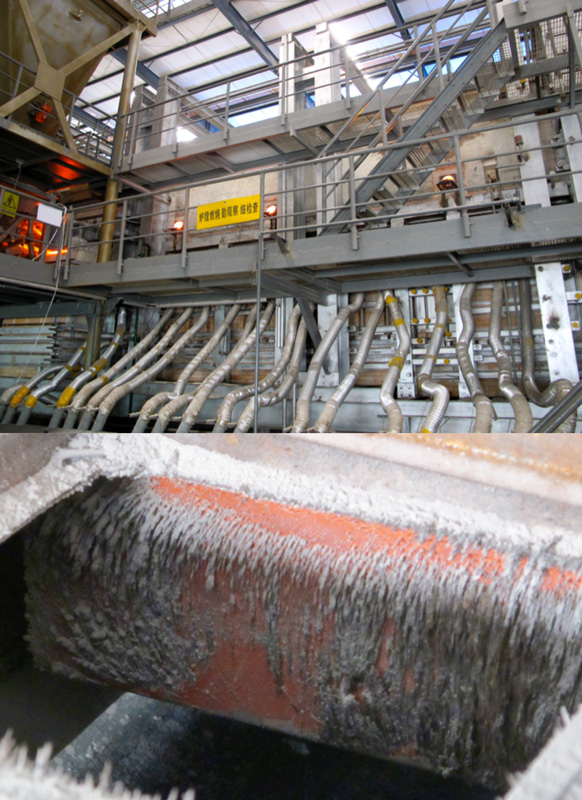
All the various component raw materials undergo chemical analysis and screening to ensure they are of equal basic consistency. These materials are then combined using a computer-controlled batching system that ensures the same precise composition and fed into a furnace using channels equipped with magnets to remove any metallic contaminants. The presence of even tiny amounts of metal, measured in only a few parts per million, can result in more iron oxide in the glass and a resulting greenish tinge. About 1/3 of the mass fed into the furnace is cullet, i.e. previously-formed glass discs that shattered after forming or were rejected downstream during inspection, but also includes unused gobs of glass from mold changeovers. The presence of cullet, whose relative proportion varies depending on size and design of the glass shell, contributes to the stability and consistency of the manufacturing process.
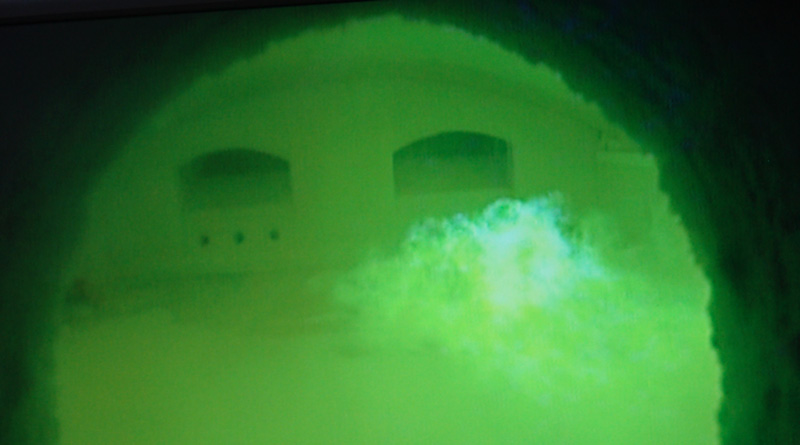
One of the most critical assets in the production of glass insulators is the furnace, typically designed to be gas-powered with some electric boosting when necessary. There are normally two heating channels, which alternate about every 15 to 20 minutes such that the heated emissions exiting from one channel function to pre-heat the intake air and thereby boost the flame of the other channel. This generates optimized heating. A sophisticated command and control system measures all key parameters to ensure complete homogeneity of the molten mass. This requires continuous stability of the furnace, which is designed to run for years at temperatures up to 1280°C without need for maintenance shutdown. Every aspect is monitored until a precise quantity of molten glass gob, free of bubbles, inclusions or impurities, is delivered by special feeders directly into pre-heated molds.
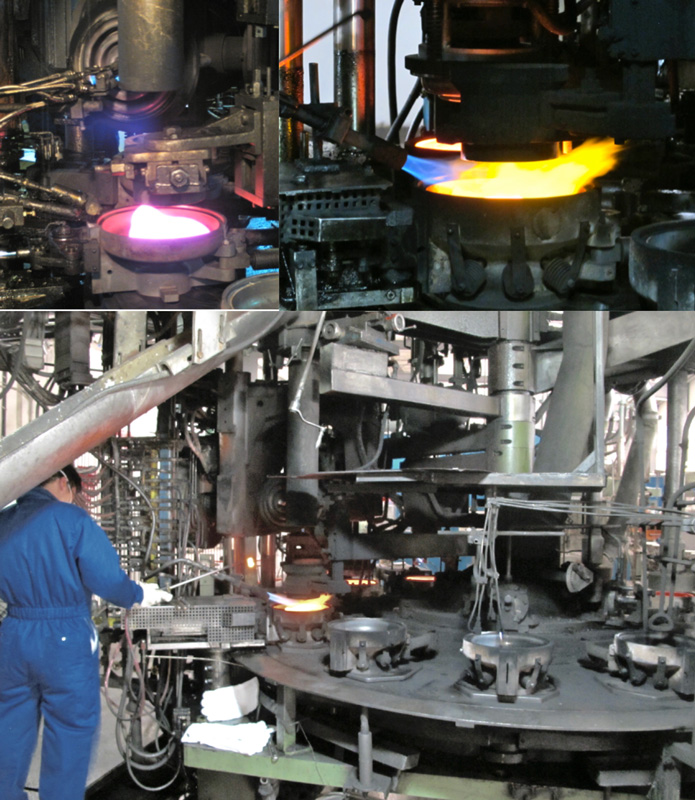 The molds, which are placed on a rotating machine, receive the glass gob and dictate the outer shape and dimensions of the shell. Internal geometry is determined by stamp devices inserted into the molten mass within the mold cavity. Pressing is critical not only because it imparts the final internal shape but also to assure uniform thickness throughout – a factor that will minimize risk of shattering during the toughening process that follows. The temperature of the glass at this stage is just over 1000°C, significantly cooler than when in the furnace.
The molds, which are placed on a rotating machine, receive the glass gob and dictate the outer shape and dimensions of the shell. Internal geometry is determined by stamp devices inserted into the molten mass within the mold cavity. Pressing is critical not only because it imparts the final internal shape but also to assure uniform thickness throughout – a factor that will minimize risk of shattering during the toughening process that follows. The temperature of the glass at this stage is just over 1000°C, significantly cooler than when in the furnace.
The importance of consistent thickness becomes evident whenever there is need to change molds to produce an insulator of different geometry. Such changeovers may require different volumes of molten glass to be drawn from the furnace for each gob and breakage rate can rise slightly as the process adjusts and stabilizes.
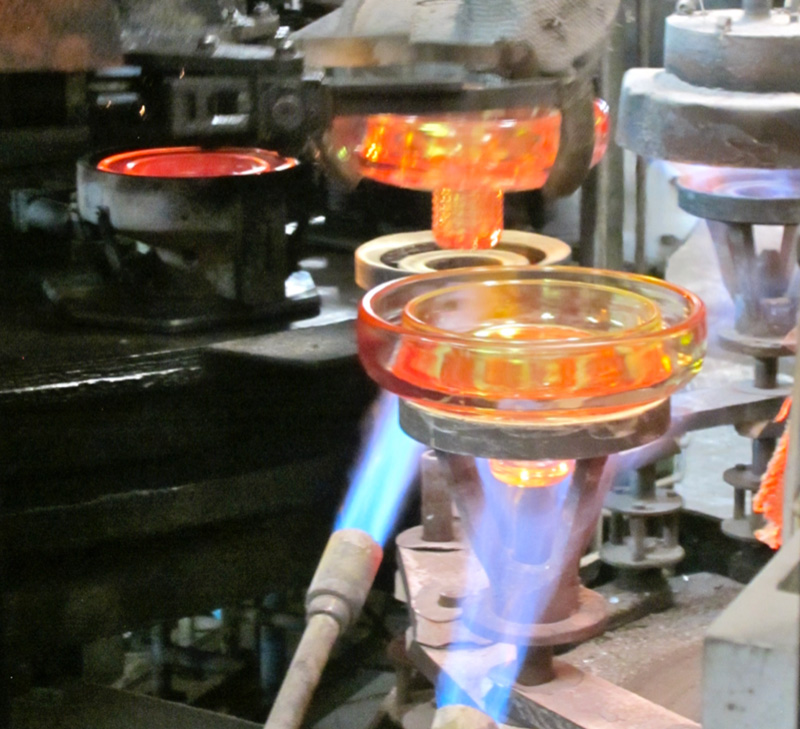
After molding and spinning, glass shells undergo the critical toughening process, whereby they are exposed to rapid surface cooling using jets of compressed air even as their inside remains extremely hot. Then, as each shell moves through the machine, its inside cools and shrinks in a process that creates the compressive stresses desired at the surface. To fully achieve this effect, the glass must be totally clean since the presence of even tiny inclusions can lead to shattering.
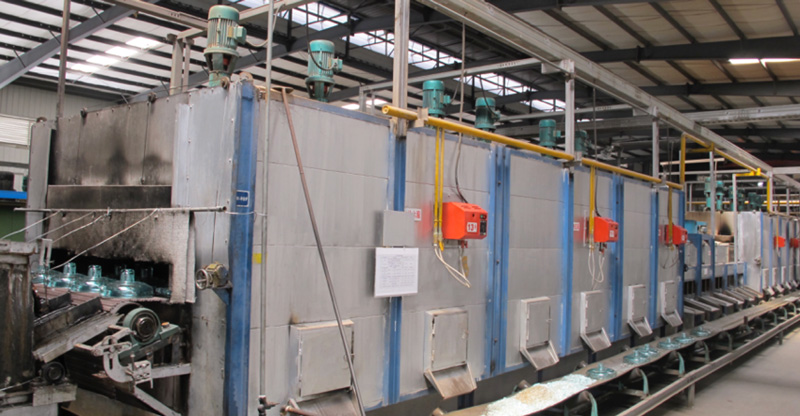
The toughening process is an important determinant of service performance by ensuring no propagation of micro-cracks in the dielectric over time and load-temperature cycling. Compressive pre-stresses on the surface of glass shells also significantly increase their mechanical resistance.
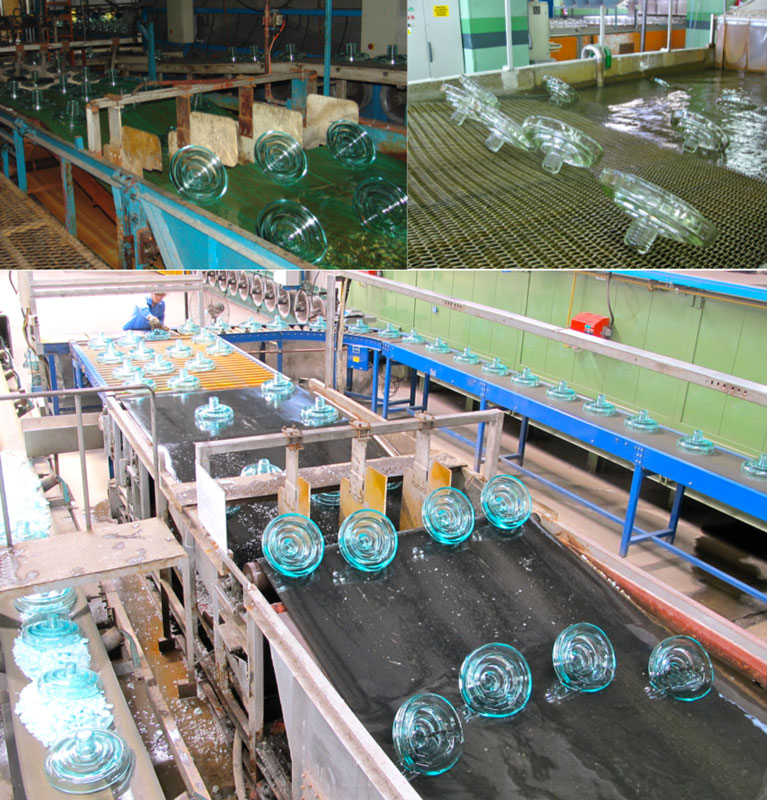
After toughening, the glass shells are transferred through successive thermal shocks by immersion in cold water, as required in the standards. This process of repeated cycles of alternate heating and cooling helps eliminate the large majority of units containing inclusions or other defects since these usually shatter under the rapid temperature change. Thermal shocking destroys as many defective pieces as possible while they are still in the factory and not yet installed on the line.
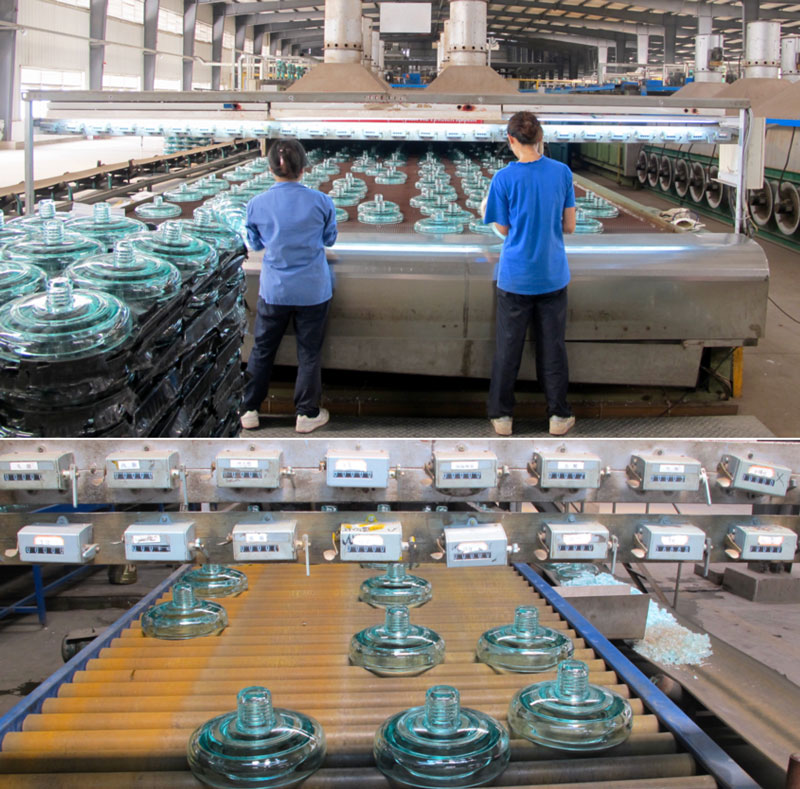
Finally, there is a close visual inspection of each shell and any defective units are placed onto a conveyor for re-cycling as cullet. Those units that pass inspection are basically complete and ready for assembly of fittings. Acceptance rates for shells in a glass insulator factory will vary among suppliers but a figure of around 90 per cent is generally considered satisfactory. Quality control staff at some manufacturers use counters installed on each production line to record and track the rate of every type of defect identified during visual inspection. Production staff will then study this data on a regular basis and discuss whether certain process parameters need to be adjusted, such as angle of burners, furnace temperature or gob feeding.
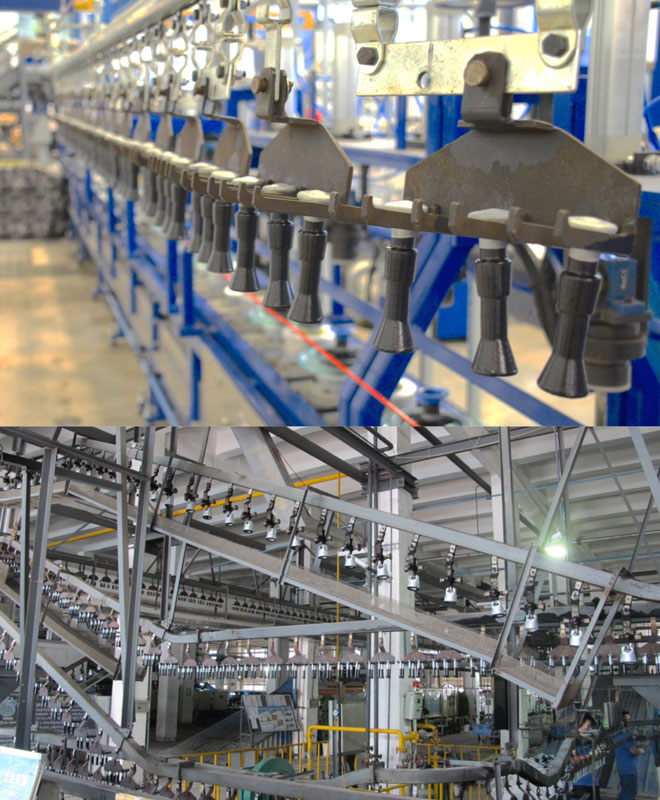
After storage, glass shells move to the next step, which consists of attachment of the metallic cap and pin to every unit. Hardware is first dipped in pitch (bitumen) to reduce risk of corrosion at key interfaces and also to provide a protective buffer between the glass and metallic surfaces that have different coefficients of expansion with temperature change. The fittings are transported using overhead conveyors to automated workstations where they are attached to the glass shells using precise amounts of pre-mixed special cement.
After assembly, there is curing in a hot water bath, whose temperature depends on the mechanical rating of the insulator. For example, some manufacturers cure 300 kN discs at about 70°C for 1½ hours.
The last stage in production consists of testing, most of which is performed on production samples at laboratory facilities in each factory. One test that is performed on every unit after curing is for tensile mechanical strength, which is done at 50% of SML rating. A well-managed assembly operation aims for such consistency in distribution of average failure load as to meet 3 or even 4 sigma criteria. The mechanical behavior of high quality glass discs is typically so good that even should the dielectric shell shatter, the stub will continue to meet its designated rating.
Testing is performed according to relevant industry standards or to satisfy special demands from customers whose requirements may be different from or more stringent than those mandated by IEC. One example is RIV testing, usually done at 10 kV, 1MHz with a maximum permissible 34 dB, although some utilities request testing at 30 kV, 1 MHz and 52 dB. Similarly, some customers require insulation resistance measurements or impact testing, almost no longer required but sometimes still demanded at an even higher level than specified in the standards. Another example of a special test requirement is where the glass string is hung at angles up to 30° inside a tunnel and exposed to wind speeds of 20 m/s. If any noise is emitted, the string does not pass.
Among the efforts to enhance quality control at glass insulator plants in recent years has been ensuring that all glass discs as well as hardware feature bar codes indicating the time and date of production. This is done to ensure complete traceability should any problems subsequently occur in service.
_________________
RELATED ARTICLES:
Testing Reliability of Cap & Pin Insulators
Access Technical Articles by Experts on Glass Insulators at INMR.com

